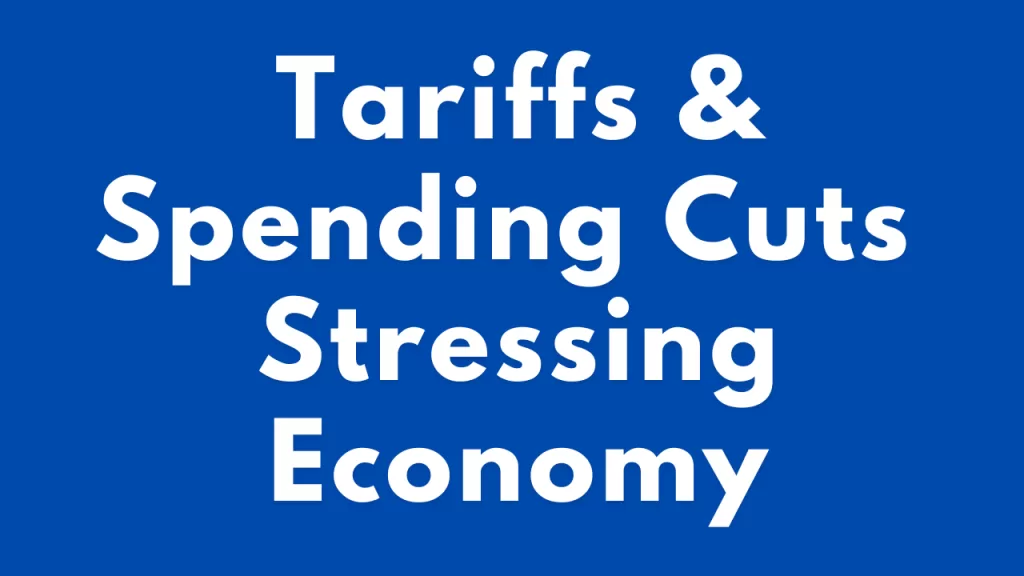Contact Factoring Specialist, Chris Lehnes
Factoring in a Trade War: A Study Guide.
Key Concepts & Overview
- Trade War: An economic conflict in which countries impose retaliatory tariffs or other trade barriers on each other.
- Tariffs: Taxes imposed on imported goods, increasing their cost.
- Accounts Receivable (AR): Money owed to a company by its customers for goods or services provided on credit.
- Factoring: A financial transaction in which a business sells its accounts receivable to a third party (the factor) at a discount in exchange for immediate cash.
- Margin: The difference between a product or service’s selling price and the cost of production or service provision.
- Cash Position: The amount of liquid assets (cash and easily convertible assets) a business has available.
- Non-Recourse Factoring: Factoring arrangement where the factor assumes the risk of the account debtor not paying.
- Turnaround: A process by which a company tries to improve its financial situation after a period of poor performance.
- Leveraged: The extent to which a business is using borrowed money.
- Customer Concentration: Situation where a large percentage of a business’s revenue comes from one or a few customers.
II. Understanding the Source Material
The source material focuses on the role of factoring as a financial tool to help businesses navigate the challenges presented by a trade war. Increased tariffs on raw materials and potential retaliatory tariffs on exports can squeeze businesses’ margins and reduce their cash position. Factoring offers a solution by providing immediate cash in exchange for accounts receivable, alleviating the pressure on cash flow. The material also highlights the flexibility of factoring, including its availability to companies with less-than-ideal financial profiles (losses, turnarounds, high leverage, etc.).

III. Quiz: Short Answer Questions
- How can a trade war negatively impact a business’s financial health?
- Explain what accounts receivable are.
- Define factoring and its primary purpose.
- Describe how factoring can improve a company’s cash position during a trade war.
- What is the range of funding available through the factoring program mentioned in the source?
- What does “non-recourse” factoring mean?
- List three types of “challenging deals” that the specialist is willing to fund.
- Who are the target clients for this service?
- What is meant by the term “customer concentration”?
- What is the estimated timeframe to advance funds against accounts receivable?
IV. Quiz: Answer Key
- A trade war can increase the cost of raw materials due to tariffs and decrease revenue due to retaliatory tariffs, squeezing margins and reducing cash flow.
- Accounts receivable represent money owed to a company by its customers for goods or services that have been delivered or performed on credit.
- It is a financial transaction where a business sells its accounts receivable to a third party (the factor) at a discount to receive immediate cash.
- It converts accounts receivable, which are illiquid assets, into immediate cash, providing a quick infusion of working capital to cover expenses and maintain operations.
- The program provides funding from $100,000 to $10 million.
- “Non-recourse” factoring means that the factor assumes the risk of the account debtor’s failure to pay the invoice, protecting the business from bad debt.
- Three types of “challenging deals” include losses, turnarounds, and highly leveraged businesses.
- The target clients are qualified manufacturers, distributors, or service providers.
- Customer concentration is a situation where a large percentage of a business’s revenue is dependent on a small number of customers.
- The text states they can advance against accounts receivable “in about a week.”
V. Essay Questions
- Discuss the potential benefits and drawbacks of using it as a strategy to mitigate the financial risks associated with a trade war. Consider alternative financing options and their relative advantages/disadvantages.
- Analyze the types of businesses that might be most likely to benefit from the factoring services described in the article. What characteristics make factoring a particularly suitable solution for these businesses?
- Explain the concept of “non-recourse” factoring and its importance in a trade war context. What are the risks and benefits for both the business selling its receivables and the factoring company?
- How does the availability of factoring for “challenging deals” expand the accessibility of financial support for businesses facing trade war-related difficulties?
- Critically evaluate the author’s argument that factoring is a viable solution for businesses facing financial challenges due to trade wars. Are there any limitations to this approach, or specific situations where factoring might not be the best option?
VI. Glossary of Key Terms
- Trade War: An economic conflict characterized by the imposition of tariffs and other trade barriers between countries in retaliation for perceived unfair trade practices.
- Tariff: A tax or duty imposed on goods imported or exported internationally.
- Accounts Receivable (AR): The outstanding invoices or money owed to a company by its customers for goods or services delivered on credit.
- Factoring: A financial transaction where a business sells its accounts receivable to a third party (the factor) at a discount for immediate cash.
- Margin: The difference between a product’s selling price and its cost of production or a service’s income and expense.
- Cash Position: A company’s available cash and other liquid assets that can be readily converted to cash.
- Non-Recourse Factoring: A type of factoring where the factor assumes the risk of the account debtor’s inability to pay the invoice.
- Turnaround: A process by which a financially distressed company attempts to return to profitability and stability.
- Leveraged: A company’s degree of debt financing; a highly leveraged company has a significant amount of debt relative to equity.
- Customer Concentration: A business situation in which a substantial portion of a company’s revenue is derived from a small number of customers, increasing the company’s vulnerability if those customer relationships are disrupted.









